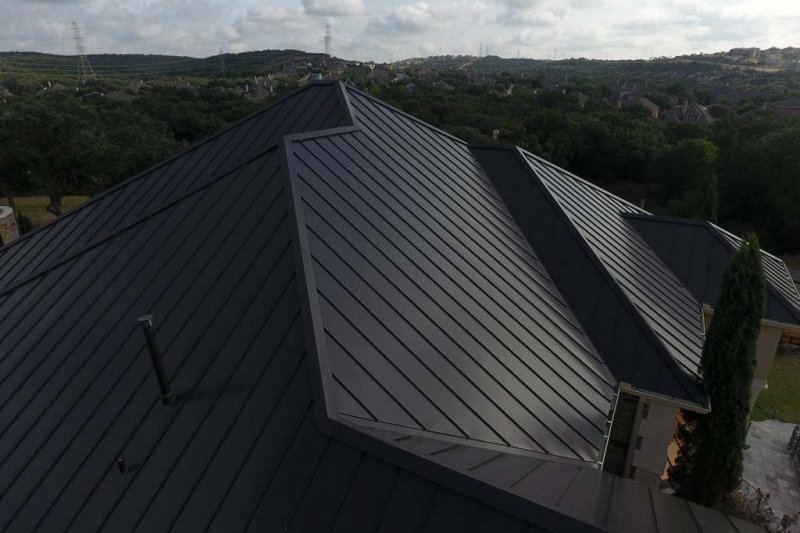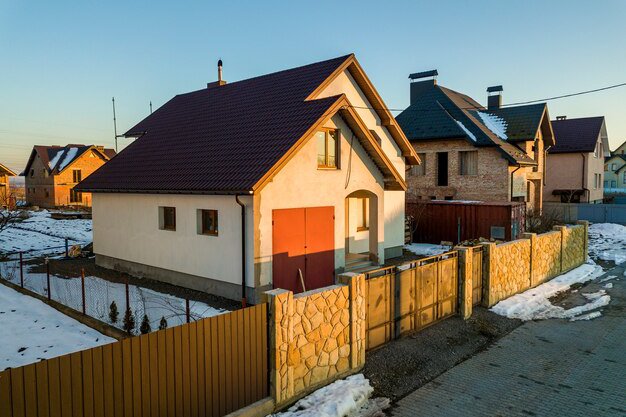Signs Your Gutters Need Replacement in Lincoln City, Oregon
Gutters play an absolutely critical role in protecting your home. They are the unsung heroes of your exterior, channeling thousands of gallons of water away from your roof, siding, foundation, and landscaping every year. Without a properly functioning gutter system, rainwater and melting snow can cause extensive and costly damage. For homeowners in Lincoln City, Oregon, where coastal weather can bring significant rainfall, ensuring your gutters are in top condition is particularly important. Knowing the signs that indicate your gutters are nearing the end of their lifespan and need replacement can save you from future headaches and expensive repairs. This article will walk you through the key warning signs to look for.
Visible Cracks, Holes, or Rust Spots
One of the most obvious indicators that your gutters are failing is the presence of visible damage on the trough itself. This damage often starts small but can quickly escalate.
- Cracks: Cracks can appear anywhere along the gutter run, but are particularly common at seams in sectional gutter systems. Small hairline cracks might seem insignificant, but they allow water to drip directly onto the fascia board behind the gutter, the siding below, or pool near the foundation. Over time, these small leaks can lead to significant wood rot, mold growth, and foundation issues. Even a seemingly minor crack compromises the system's ability to channel water effectively.
- Holes: Holes are a more advanced sign of deterioration. They might be caused by corrosion, impact (like falling branches), or simply age and wear. Any hole, regardless of size, means water is escaping the intended path. This escaping water can cause concentrated damage below the hole, leading to localized erosion in landscaping, staining on siding, and potential entry points for water into the wall structure or basement.
- Rust Spots: Rust is a common issue, especially with steel or older galvanized gutters. Rust spots indicate the protective coating has worn away, and the metal is corroding. Initially, these might just be stains, but they are a precursor to holes. As rust spreads, the metal weakens, making the gutter more prone to cracking, bending, or developing actual perforations. If you see rust, it's a clear sign the material is degrading and likely needs replacement soon. Even rust stains running down the outside of the gutter or onto the siding are a warning sign that the metal's integrity is compromised.
Why this is a problem: When gutters have cracks, holes, or rust, they cannot effectively channel water away from the house. Instead, water leaks out, saturating the ground directly around the foundation, splashing onto siding and windows, and potentially causing rot in the fascia and soffit boards that the gutters are attached to. This constant moisture can lead to structural damage over time.
Spotting visible damage like cracks or rust means it's time for a professional assessment.
Find a local gutter expert
Sagging or Pulling Away from the House
Gutters should sit level (or with a slight, intentional pitch towards the downspouts) and be securely fastened to the fascia board. If you notice sections of your gutters sagging, dipping, or pulling away from the house, it's a major red flag.
- Causes of Sagging: Sagging is often caused by excessive weight from debris (leaves, twigs, silt, standing water) that hasn't been cleaned out. This weight strains the hangers or fasteners, causing them to bend, break, or pull free from the fascia. Sagging can also occur if the fascia board itself is rotten and can no longer hold the hangers securely. Improper installation with too few hangers or hangers spaced too far apart can also lead to sagging over time as the material weakens.
- Causes of Pulling Away: Gutters pulling away from the house is usually a sign that the fasteners have failed, the hangers are broken, or the fascia board is compromised by rot or insect damage. This creates a gap between the gutter and the fascia.
Why this is a problem: Sagging gutters don't drain properly. Water collects in the low spots, adding more weight and exacerbating the problem. This standing water is also a breeding ground for mosquitoes and can cause the gutter material to deteriorate faster. When gutters pull away, water flows directly down the side of the house, behind the gutter, soaking the fascia, soffits, and potentially entering the wall cavity. This can lead to extensive wood rot, mold, and structural damage that is often hidden from view until it becomes severe. A gutter that has pulled away is also at risk of completely collapsing, especially during heavy rain or snow.
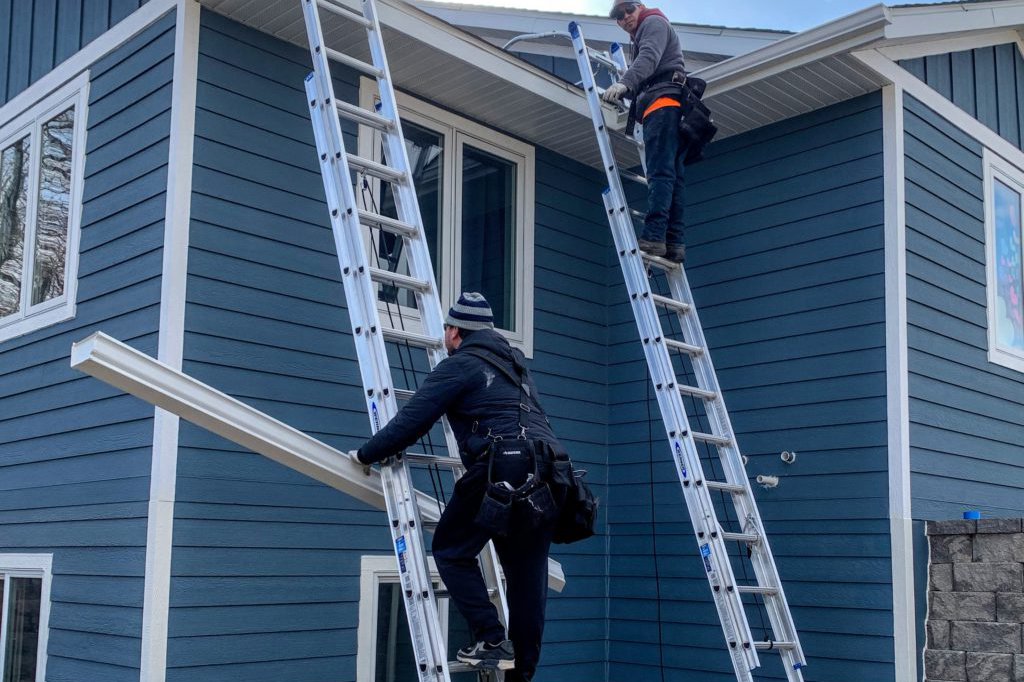
Water Marks or Mildew on Siding Beneath Gutters
If you observe streaks of dirt, water stains, or patches of mildew and algae on your home's siding directly below your gutters, it's a strong indication that water is overflowing or leaking from the gutters.
- How it Happens: This staining occurs when water, carrying dirt and debris from the roof and gutters, runs down the exterior walls instead of being channeled through the downspouts. This can happen because the gutters are clogged with leaves and debris, causing water to spill over the edges. It can also be caused by leaks through cracks, holes, or poorly sealed seams in the gutter system. Sagging sections can also cause overflow at the low points.
- Mildew and Algae: Persistent moisture on the siding creates an ideal environment for mildew, mold, and algae to grow. These not only look unsightly but can also damage the siding material over time, especially on wood siding where it can lead to rot.
Why this is a problem: Water marks and mildew are visual evidence of water repeatedly contacting your home's exterior walls where it shouldn't be. This constant exposure to moisture can cause paint to peel, siding to warp or rot (particularly wood), and can potentially find its way into the wall structure, leading to internal damage, insulation issues, and mold growth inside the home. While cleaning the gutters might temporarily stop the overflow if clogging is the cause, the presence of these stains can also signal underlying issues like improper pitch, insufficient gutter capacity, or damage that needs professional attention.
Pooling Water or Eroded Landscaping Near Your Foundation
The primary purpose of gutters is to direct water away from the foundation. If you see puddles of water collecting around the base of your home, or if the landscaping mulch or soil appears eroded or washed away in specific areas near the foundation, your gutters are likely failing to perform this crucial function.
- Causes: This happens when downspouts are clogged, disconnected, or not extended far enough away from the foundation (ideally, downspouts should extend at least 6-10 feet away). It also occurs when gutters are overflowing due to clogs or insufficient capacity, causing water to cascade directly onto the ground next to the house. Leaks and sagging sections also contribute to water pooling near the foundation.
- Erosion: The force of overflowing water or water dripping from leaks can wash away soil and mulch, creating visible trenches or depressions in the landscaping directly beneath the affected gutter sections.
Why this is a problem: Water pooling near the foundation is one of the most serious consequences of faulty gutters. When the soil around the foundation becomes saturated, it can expand, putting pressure on the foundation walls (hydrostatic pressure), which can lead to cracks. Water can also seep through foundation cracks or porous concrete into the basement or crawl space, causing interior flooding, mold growth, and damage to finished areas. Repeated saturation and drying cycles can also cause the soil to shift, potentially leading to foundation settling and structural issues that are extremely expensive to repair. Eroded landscaping is a visible symptom of this underlying problem and can lead to further issues like exposed roots or destabilized patios/walkways.
Gutters Are Over 20 Years Old
Like any building material, gutters have a lifespan. While well-maintained gutters can last a long time, different materials have varying lifespans.
- Material Lifespans (Approximate):
- Vinyl: 10-20 years
- Aluminum: 20-30 years
- Galvanized Steel: 20 years (prone to rust)
- Copper/Zinc: 50+ years (can last a century or more)
- Age as a Factor: Even if you don't see obvious signs of damage, gutters nearing or exceeding their typical lifespan are more susceptible to failure. The material may become brittle (vinyl), corrode (steel), or simply degrade over time due to constant exposure to the elements, temperature fluctuations, and UV radiation. Fasteners and hangers can also weaken over decades.
Why this is a problem: While age alone isn't always a direct cause for immediate replacement, it significantly increases the likelihood of developing problems. An older system is more prone to developing leaks, sagging, and becoming less effective at handling heavy rainfall. Proactively replacing gutters that are at the end of their expected life is often a wise investment to prevent the sudden onset of problems and the associated water damage. It's better to replace them on your schedule before they fail unexpectedly during a major storm.
Other, Less Common Signs
Beyond the most prominent indicators, a few other signs might suggest your gutters are failing:
- Peeling Paint on Fascia or Siding: Paint that is peeling, blistering, or discolored specifically along the fascia board behind the gutters or on the siding directly below the gutters can be a sign of chronic moisture exposure due to leaks or overflow.
- Basement or Crawl Space Leaks: If you notice water entering your basement or crawl space, especially after rain, poorly functioning gutters are often the culprit. This is a serious sign that water is not being directed away from the foundation as it should be.
- Mold or Mildew in the Attic or Upper Walls: In severe cases of water infiltration from gutter issues affecting the fascia and soffits, moisture can wick up into the wall cavities or even the attic, leading to mold growth and insulation damage. This is a sign of a significant, ongoing water problem.
- Gutters Pulling Away from the Roofline: This can indicate issues with the hangers, the fascia board, or even the roof's drip edge, all of which compromise the gutter system's function.
Why Timely Gutter Replacement is Crucial
Ignoring the signs of failing gutters is a gamble that rarely pays off. The cost of repairing damage caused by faulty gutters is almost always significantly higher than the cost of replacing the gutters themselves. In a place like Lincoln City, where rainfall can be substantial, a compromised gutter system can lead to rapid deterioration of your home's structure.
Here's a breakdown of the potential consequences of delaying gutter replacement:
- Fascia and Soffit Damage: The wooden boards (fascia and soffit) that the gutters are attached to are highly susceptible to rot when constantly exposed to moisture from leaks or overflow. Repairing or replacing rotten fascia and soffits is an additional cost on top of the gutter replacement.
- Siding Damage: Water running down the siding can cause staining, warping, and rot, particularly with wood siding. This can necessitate expensive siding repairs or replacement.
- Foundation Problems: This is the most severe and costly consequence. Saturated soil around the foundation can lead to cracks in the foundation walls, shifting, and settling. Foundation repairs can cost tens of thousands of dollars.
- Basement and Crawl Space Issues: Water intrusion can cause flooding, damage to stored items, mold growth, and create an unhealthy indoor environment.
- Landscape Erosion: While less critical than structural damage, eroded landscaping means additional costs to repair and replant.
- Mold and Mildew: Chronic moisture encourages mold growth, which can damage building materials and pose health risks.
- Pest Infestations: Damp, rotting wood attracts insects like termites and carpenter ants, leading to further structural damage.
Proactive gutter replacement addresses these potential issues before they become serious problems, protecting your home's structural integrity and saving you money in the long run.
Considering Replacement Options
Once you've determined your gutters need replacement, you'll have options to consider regarding materials and types. Common materials include aluminum (popular and cost-effective), steel (durable but prone to rust if coating is damaged), copper or zinc (expensive but long-lasting and develop an attractive patina), and vinyl (least expensive, but less durable and can become brittle).
You'll also choose between sectional gutters (come in pieces joined together, more prone to leaks at seams) and seamless gutters (custom-made on-site to the exact length of your roof sections, minimizing leaks and offering a cleaner look). Seamless gutters are often recommended for their durability and reduced maintenance needs.
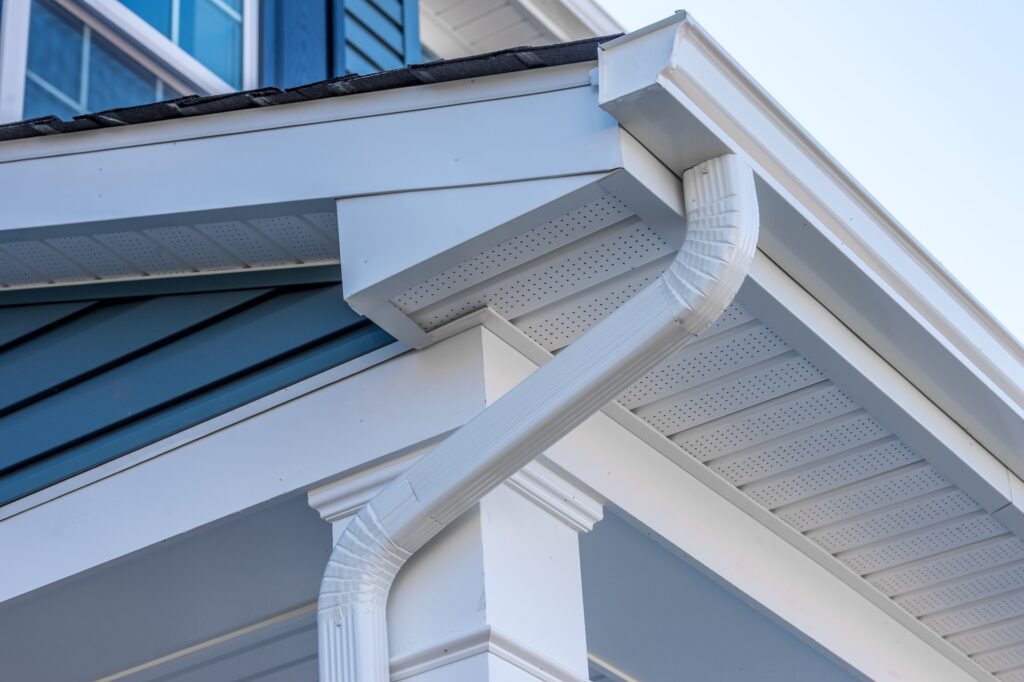
Getting a Professional Assessment
Identifying the signs of failing gutters is the first step, but determining the best course of action – repair or full replacement – and selecting the right system for your home in Lincoln City requires professional expertise. A qualified contractor can assess the extent of the damage, evaluate the overall condition of your existing gutters, recommend the most suitable replacement options based on your home's design and local weather patterns, and provide an accurate quote for the work.
Finding a trustworthy and skilled local contractor can sometimes be a challenge. You want someone reliable who understands local building codes and the specific needs of homes in the area.
If you've spotted signs your gutters need attention, connecting with a professional is easy.
Book a local contractor appointment
SkyQuote offers a service that simplifies this process. While SkyQuote itself doesn't perform the physical gutter replacement work, it provides a platform to connect you directly with pre-vetted, quality local contractors who specialize in exterior work, including gutter replacement. All you need to do is select the service you need (like gutter replacement assessment or quote) and your preferred day, and SkyQuote finds available, qualified roofers or exterior contractors in your area and schedules the appointment for you. This saves you the time and hassle of searching for contractors and coordinating schedules yourself.
(Note: SkyQuote also offers an instant estimate service, which is specifically for roofing estimates using satellite imagery. This is separate from booking appointments for services like gutter replacement.)
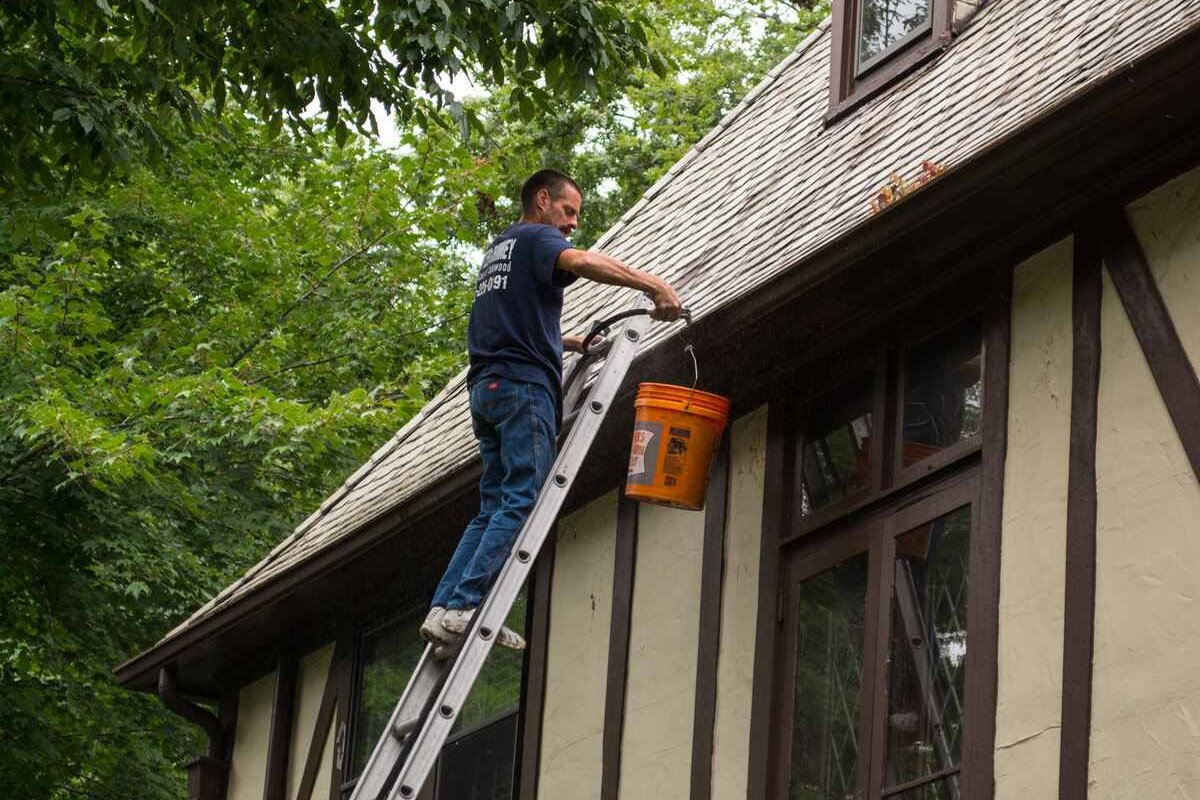
Protecting Your Home Investment
Being vigilant about the condition of your gutters is a vital part of responsible homeownership. Recognizing the warning signs early – visible damage, sagging, water stains, foundation issues, or simply age – allows you to take action before minor problems escalate into major, expensive repairs. Don't wait until you have water leaking into your basement or significant rot on your fascia boards to address gutter issues. Regular inspection and timely replacement of failing gutters are among the most effective ways to protect your home's structure, foundation, and overall value against the damaging effects of water.
